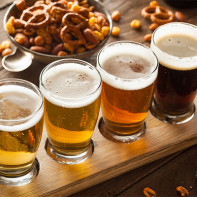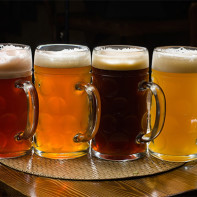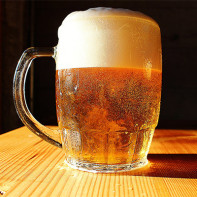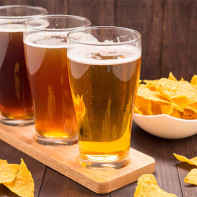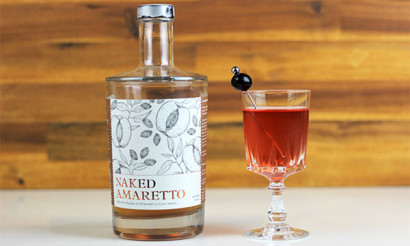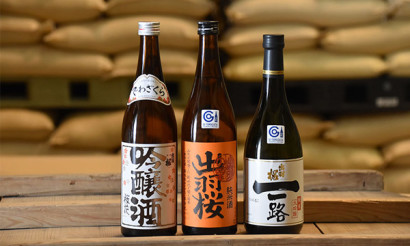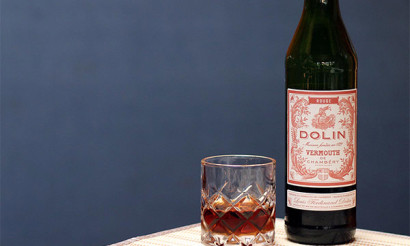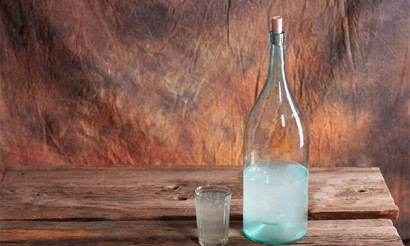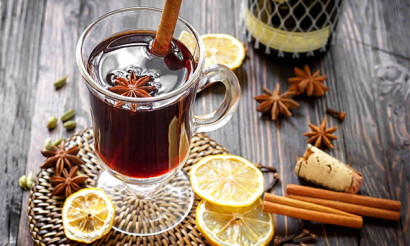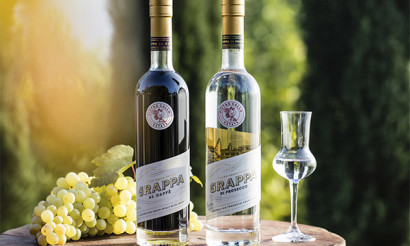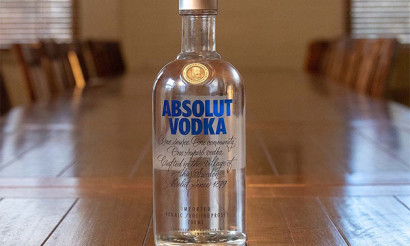How to drink beer correctly
The first references to beer date back to the 7th century B.C. Those records mention a recipe for wine made of grains. Making malt from grain first began in Egypt and Mesopotamia.
- What is beer
- Types of
- Composition and calorie content
- How to drink beer correctly
- What glass to drink from
- What to drink with
- What to drink with
- Can one drink beer?
- Before donating blood or urine.
- With antibiotics
- Diabetes mellitus
- Gastritis
- For pancreatitis.
- For hepatitis.
- For colds
- For prostatitis
- For gout
- For angina
- For cystitis
- For hemorrhoids
- For thrush
- At oncology
- Pressure
- After a tooth extraction
- After training
- After a tattoo
- At the bathhouse
- If you are pregnant
- Breastfeeding mother
- Slimming
- Beer Cocktails: Recipes
- Snack
- Cyclist
- Beer Rascal
- How to make beer in home conditions
- Health and harm of beer
- Interesting facts about beer
What is beer?
Beer is called a low-alcohol drink, which is made from water, yeast and malt. Malt is a special infusion of sprouted cereal grains. Mostly wheat and barley grains are used to make beer, and much more rarely rice. To create a unique taste, some producers add honey or herbs to beer.
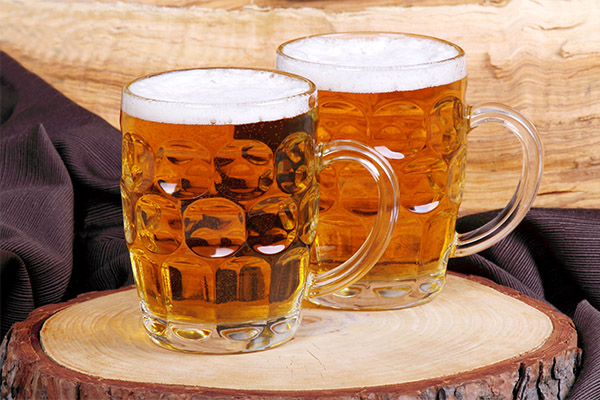
Types of Beer
To date, there are a large number of varieties of beer. Experts are still unable to agree on the best way to classify this drink. Opinions of experts from America and Europe differ considerably. But still most of them are sure that beer can be divided according to the type of fermentation. There are three main types according to the type of fermentation:
- Ale. This beverage is made from barley malt. A top fermenting yeast is used, which makes the drink ferment well. The fermentation process itself takes place at high temperatures. It is believed that this brewing method gives the beer a richer aroma and flavor. In the past, hops were not used to make ale, they were replaced by a mixture of different herbs. In the Middle Ages, this drink was valued even more than milk for its ability not to spoil. Now, the producers gave up herbs and began to use hops, otherwise, according to the law, such a drink could not be called beer. Herb ale is still occasionally found in stores, but it has a different name. Alcohol content in ale generally does not reach even 8%, but some varieties can greatly exceed the norm.
- Lager. This beer is made with bottom-fermenting yeast. This is a popular method. The finished product matures not immediately, but during storage. The beer is oxygenated and kept at zero temperature. Due to the low temperature, it is possible to prevent oxidation of the beer. The fermentation process lasts for 7 days. After fermentation is finished, the yeast is separated out and the beer undergoes a second fermentation. This process takes place in large tanks which are filled with carbon dioxide and under pressure. The beer is then left to mature at a low temperature, filtered and poured into containers. To increase the shelf life of bottled beer, it may be subjected to an additional pasteurization process.
- Blended. This category is also called spontaneous fermentation beer. Fermentation occurs in it due to environmental influences. This treatment "charges" the beer with natural yeasts or bacteria. The beer made with this technology is not filtered and has a sour taste. The ingredients are carefully selected and combined in different variations. Some varieties may have a red hue. The color depends on the roasting time of the malt, which is most often used to make dark beer. This method of brewing has been practiced for decades in a region of Belgium.
Composition and calories
There is a popular belief that beer is a very caloric product. Many people know drinkers who suffer from excessive weight. This is why the myth has appeared that beer promotes obesity. In fact, there are very few calories in it, the amount depends on the production technology and the alcohol content. For example, the caloric value of light beer is only 30 kcal per 100 grams of drink, and dark beer - 50-55 kcal. It turns out that the cause of extra weight is not the beer itself, but snacks - chips, nuts, etc.
The number of ingredients that make up beer is small. The main components of this drink are:
- Water. This is the main ingredient of beer, in any kind of beer its content is kept at 90% and above. Therefore, the quality of raw materials has a significant impact on the final taste of the product. Producers use water from mineral springs, ordinary tap water is not suitable. But there are some varieties which are made from hard water, for example English ale. This is its flavor feature.
- Malt. This is the grain that has given rise to sprouts. It is processed and dried to extract the sugar, which is needed to form the alcohol. First, the grains are soaked, then the water is drained off, and the raw material is moved to the concrete floor and stirred regularly. After a short period of time, sprouts begin to appear. As soon as the grain begins to sprout, its temperature increases and the proteins and starch turn into sugar. After sprouting, the grain is moved to a special elevator where it is dried and the excess moisture is removed.
- Hops. Since this product is a natural preservative, it is used to prevent the appearance of bacteria. It is also a good antiseptic. Basically, it is not necessary to use hops, because in the past we did without them, but then the taste of the product is different. It is the hops that give the aroma and the taste of the beer. In Russian there is a word "hop", which means "intoxicate", but in fact the hops have no effect on the strength of the product.
- Yeast. Yeast plays a different role in each recipe. In some cases they are used only for alcohol and gas production, in others they can add a unique aroma and flavor.
- Additional ingredients. The number of additives is very large. They are used to give the drink a special flavor. It can be cloves, vanilla, fruit. The most popular additional component is unpeeled. This is pure grains that have not been sprouted.
How to drink beer properly
Knowing how to properly drink beer can be called without exaggeration an art. And not everyone knows how to do it. Only when the drink is consumed correctly its true flavor and aroma are revealed. Each alcoholic drink has its own rules of drinking, for example, wine is first rolled on the tongue, cocktails are drunk from straws and cognac - in a gulp. Beer is no exception. It is customary to drink it in three sips. The first sip should absorb exactly half of the glass, the second - the remaining half, the third - the rest. That's why you have to pour exactly three sips into your glass.
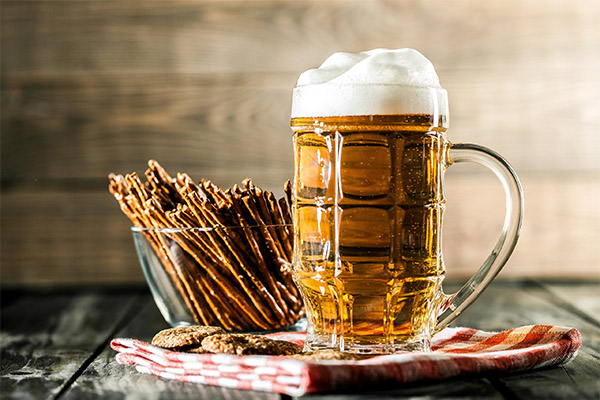
Another main rule of drinking beer is not to be combined with other alcohols. Beer does not tolerate mixing with other alcoholic beverages and even more so with other varieties, otherwise headache and malaise are guaranteed.
What glass to drink from
The choice of glass depends on the type of beer. For example, ale is best poured in an English pint glass, but it is also suitable for wheat beer. For pilsner a tall glass with a foot is ideal, for dark lager - a classic beer mug. White beer is better to drink from a glass with a narrowed middle. But there is a general rule for all kinds of beer: glass. Metal and plastic container spoils the taste and affects the transparency.
What to snack on
If you drink beer without a snack, you can get drunk very quickly. Through the walls of the stomach, alcohol instantly enters the bloodstream. Any food will envelop the intestinal walls, which will prevent the alcohol level from spiking. Almost any food can go with beer as a snack. Chips, crisps, and nuts are the most common. In Australia they drink beer with sausages, in Holland with cheese, and in the United States with fries and chicken wings. Germany and the Czech Republic serve sausages and wieners.
What to drink
Alcohol is a strong diuretic. It stimulates the kidneys, but with it the body loses a lot of water. It doesn't matter how much beer you drink, even a glass or ten, the body loses fluid in the same way. Therefore, after drinking beer it is necessary to drink water. Its amount should be equal to the amount of beer drunk. As a precaution it is also recommended to drink water before going to bed.
Can one drink beer?
Drinking beer is possible and in some cases even useful, but you should not forget that everything is good in moderation. A couple of bottles on the weekend will not have negative consequences, but abuse can lead to serious health problems. It is also not advisable to drink beers with high alcohol content too often.
Before taking blood and urine tests
Getting tested is always unpleasant. There is hardly a single person who enjoys it. It is always accompanied by a number of inconveniences. First, you have to get up very early, and secondly, you have to give up your usual breakfast. It also imposes some restrictions on the consumption of food on the day before the test. In the case of alcohol, the restriction applies for 2-3 days. If you take alcohol for 72 hours before the test, the results will be severely distorted, which will not allow you to prescribe the correct treatment.
With antibiotics.
If you consume beer in moderation, it will even be beneficial, and the liver will be able to cope with such a load from alcohol without much effort. But this is not the case with medications. Modern antibiotics are very powerful drugs that not only kill harmful microorganisms, but also have a negative effect on the intestinal microflora. They put a huge strain on the kidneys and liver. Usually after a course of antibiotics, people are prescribed restorative medications. Consuming alcohol with antibiotics will only increase the burden on the liver.
In addition, the ethanol contained in beer weakens the effect of the drug, and it is impossible to increase the dose of the drug because of its toxicity. In addition, ethanol serves as a solvent. If you drink alcohol immediately after taking the medication, a chemical reaction will begin, the emissions of which will be absorbed into the blood. And the carbon dioxide that is in the beer will accelerate the absorption of this mixture. When drinking alcohol with antibiotics, there is a high probability of burning the mucous membrane of the stomach.
If you have diabetes
This disease requires patients to eat a very strict diet. People have to give up their habits and favorite foods. Patients are strictly forbidden to drink strong alcohol, otherwise the consequences can be very sad, up to coma. Beer belongs to the category of products that can be consumed, but in very limited quantities. With diabetes, you can not drink more than 300 ml of beer at one time. It is also prohibited to drink it every day, but no more than twice a week. Diabetics should not drink beer before physical activity or on an empty stomach. If you have diabetes, you should avoid dark beers, because they contain more carbohydrates. Non-alcoholic beer is preferable. You also need to watch the amount of carbohydrates that enter the body with this drink.
Important: The glycemic index of beer from 5 to 110 units.
In case of gastritis
Doctors do not recommend drinking beer for any form of gastritis. When alcohol enters the stomach, it begins to adversely affect the mucous membrane. This can lead to damage to the walls of the stomach or to their partial destruction. This process lasts depending on the strength of the drink and some features of the body. The most dangerous if the patient has gastritis in the initial stage. He may not notice the aggressive effects of beer on the body. In other conditions, the process is quite painful. But since beer is a low-alcoholic drink, it has a weakly pronounced anesthetic effect, so the destructive processes in the stomach may not be noticed. Some people with gastritis in the initial stage ignore diets and continue to drink beer, but eventually it can lead to ulcers. Then you will have to sit on a stricter diet.
For pancreatitis.
This is another condition that requires a diet. Consumption of alcohol in pancreatitis is strictly forbidden, especially during exacerbations. Even when the pain goes away, you should stick to the prescribed diet, because improper diet can cause another exacerbation. Even though beer contains little alcohol, it is still forbidden to drink it. The main danger lies in ethanol.
Ethyl alcohol has a negative effect on the pancreas. It can change the composition of the pancreatic juice, which leads to the appearance of protein plugs that can later completely block the ducts. It also thickens the walls of small vessels, which can disrupt circulation in pancreatic tissues. Alcohol also affects pancreatic cell membranes and makes the pancreas vulnerable to other negative influences.
In Hepatitis.
Hepatitis is a viral disease that destroys the liver. The treatment process involves following a strict diet and avoiding alcohol altogether. Although some people believe that beer, as a low-alcohol beverage, can do no harm, it nevertheless puts a strain on the liver with any alcohol. The alcohol content of beer ranges up to 10%, and in particularly strong beers it can be up to 16%. Even beer with low alcohol content increases the destructive effects of hepatitis and can lead to irreversible consequences. Beer can accelerate the growth of viral cells in the body. Also, the cells of the virus can mutate under the influence of alcohol, and treating the disease becomes problematic. Once in the body, alcohol provokes rebirth of liver cells called hepatocytes. This can then cause fibrotic lesions to appear.
If you have a cold.
Beer lovers sometimes find it very difficult to refuse to drink this drink even when seriously ill, not to mention such a trifle as a cold. Some sources on the Internet assure us that drinking beer during a cold is perfectly safe and healthy. But in fact it is not. As the main argument they cite the fact that alcohol dilates blood vessels, which leads to the removal of headaches or other pain. First, alcohol only warms the skin of the body, and only for a short time. If a re-cooling occurs, the intoxicated person may not even notice it. Secondly, alcohol is incompatible with medications, and drinking alcoholic beverages can only worsen the condition. Therefore, it is better to use medicines or other effective remedies, such as green tea, lemon, etc., to get rid of a cold. In addition, despite the large amount of vitamins and beneficial substances, alcohol can only undermine the already weak immune system.
With prostatitis

It is impossible to overestimate the role of the prostate gland for men. Its diseases can cause malfunctions in the whole body. Some problems with it are connected exactly with beer. In order to enjoy a full life you will need to reconsider your attitude towards beer, otherwise prostatitis is guaranteed.
For the prostate gland an irritant is any alcohol, but it does not like beer particularly much. It is the dosage that plays a major role here. Excessive consumption will increase the amount of triglycerides in the body, which create the necessary conditions for the development of the disease. In addition, beer in large doses and without disease has a negative effect on potency, suppressing the production of testosterone. It is possible to drink beer with prostatitis, but in small doses and only light varieties.
At gout
With gout, it is strictly forbidden to drink beer. Even when consumed in small quantities, the level of uric acid increases. In addition, alcohol not only increases its content, but also retains it in the body. This is what causes gout, which harms the joints. Also high levels of uric acid in the body harm the heart and blood vessels.
In case of sore throat.
Warm beer has been a cure for a sore throat since ancient times. However, this remedy works much slower than pharmacy medicines. Beer contains a small amount of alcohol, so it is not as destructive as folk remedies on vodka. But it is important to know when you can drink beer and what kind. Canned beer for the treatment of angina is better suited, because it retains a greater amount of vitamins. Dark and strong varieties should not be used as a medicine. Warm beer is able to thin the phlegm and speed up its secretion. It also expands the pores, which contributes to the faster excretion of toxins.
However, it is worth remembering that beer should never be drunk with high fever and purulent sore throat. And, of course, you can not mix beer with antibiotics.
With cystitis
In this disease, patients are recommended to drink more fluids, and some people, misunderstanding, start drinking beer in large quantities. They argue this with the diuretic function of the foamy drink. Hops are useful for treating cystitis, which may also be the reason for the myth about the benefits of beer. In fact, decoctions of hops are useful, but when it combines with ethanol, it does more harm than good to patients. The ethanol in beer only increases inflammation but does not relieve it.
For hemorrhoids
Exacerbations of this disease always occur at the most unexpected moment. A person who has not suffered from painful sensations for a long time will not even think about whether he can drink alcoholic beverages during the holiday. But since beer, like any other alcohol, is able to improve blood flow, it is not recommended for hemorrhoids. In this disease, blood vessels and veins are already dilated, and after drinking alcohol they dilate even more, which can lead to fissures and bleeding.
If you have thrush
Mold is a disease caused by the growth of fungi called Candida. An increase in their number (candidiasis) is particularly dangerous. Therefore, in case of thrush you should exclude any beer from your diet, even non-alcoholic beer. The yeast and carbohydrates contained in it are favourable for the growth and development of fungi. In addition, beer contains other substances that can accelerate the growth of fungi of this type.
If you are suffering from oncological diseases
In such a case, a consultation with a doctor is necessary, but you still have to forget about regular consumption of beer. In order not to worsen the condition of the patient, it is required to undergo special therapy, a strict diet. Beer is on the list of products that should not be consumed.
In case of blood pressure
When people have high blood pressure, they have to take special medicine to normalize it. The proper effect can only be obtained if the medicine is absorbed into the bloodstream gradually. Alcohol, even in small amounts, instantly destroys the shell of the drug, due to which the patient receives an incorrect dose of the drug. Later this can cause intoxication.
When low blood pressure, you also can not drink beer, if the cause of this condition is vascular problems. It is also not allowed to take it with medication. But if the cause of low blood pressure is weight loss due to heavy loads on the body, then in small quantities it can increase hemoglobin and calm the nervous system.
After tooth extraction
After tooth extraction surgery, alcohol is contraindicated, especially beer. You should refrain from drinking alcoholic beverages for 2-3 days. You need to give some time for the wound to heal. The yeast bacteria contained in beer can easily proliferate in the mouth. And if a drop of beer gets into a wound, the consequences can be sad.
After a workout
In no case immediately after exercising the body should not drink beer. Physical exercise stresses the body, especially the cardiovascular system. Although there is a small amount of alcohol in beer, but it is still there, which means that the load on the body after drinking it will only increase. Therefore, it is necessary to wait a little before drinking beer.
After the tattoo
It is strictly forbidden to consume alcohol before and after tattooing. The restriction on alcohol intake is imposed until the full healing of the wound, and the term in this case depends on the complexity of the tattoo and in some cases can be delayed for up to several weeks. It is especially dangerous to drink beer in the first day after tattooing. The use of alcohol does not allow the wound to heal quickly, in addition, if the tattoo is fresh, along with the blood, the ink can leak out, which will spoil the design. Also, beer can cause an inflammatory process.
In the bathhouse
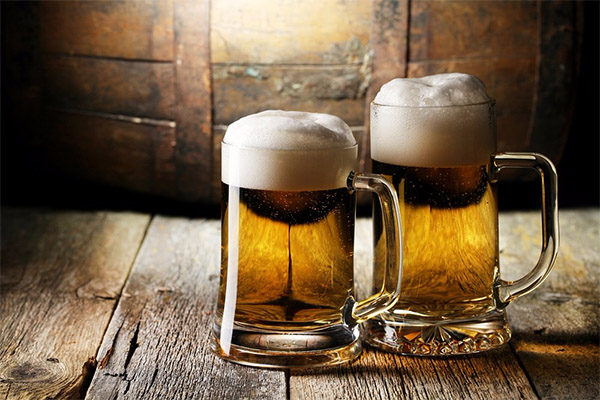
One 0.5 ml bottle of beer is equivalent to one shot of vodka. And drinking vodka in the heat is not a good idea. Therefore, you should refuse to drink beer in the bath. Firstly, it is a double load on the body, a healthy person may suffer from it, but if there are problems with health, everything can end sadly. Secondly, it is an increased load on the blood vessels: if they are weak, they can burst. Thirdly, after drinking alcohol people are euphoric and then drowsy, so a person can fall asleep in the steam room.
In pregnancy
During pregnancy, it is definitely not allowed to consume any alcoholic beverages. Although there is not much alcohol in beer, but even this amount is enough to harm the body of the woman and the baby. In addition, beer contains phytoestrogens, which can cause hormonal imbalances. And drinking beer early in pregnancy is even more dangerous than at the end of pregnancy.
To the nursing mother
It seems that after the birth of the child there comes a period when you can enjoy yourself to the full after nine long months of restrictions. But breastfeeding is not the end of the restriction period. It is important to eat right. Drinking large quantities of beer instantly penetrate the milk and can cause harm to the baby. But in small doses it is still allowed. However, it should not be stronger than 5%. Drink no more than 200 ml.
When losing weight
Despite the low calorie content in beer, it is still not recommended to drink it when losing weight. It is all about empty calories, which are contained in large quantities in it. Beer can increase appetite, which is not good for weight loss people.
Cocktails with Beer: Recipes
Yersh
One of the most famous recipes with beer is "Ersch". To prepare it, you will need:
- 200 ml of beer;
- 30 ml of vodka.
Mix the ingredients thoroughly and drink. This is probably the oldest recipe for a cocktail with beer.
Cyclist
If you mix beer with lemonade in the proportion 1:1, you get the cocktail "Cyclist". It was invented in the 1920s in Germany. Back then, the route of a bicycle marathon was held near a tavern, where the owner came up with such a cocktail.
Beer Rascal.
Another interesting cocktail is called "Beer Rascal," to make it you will need:
- 400 ml of beer;
- 100 ml of vodka;
- 60 ml of tomato juice;
- 2 tablespoons of ketchup.
First, place the ketchup and tomato juice in the glass, then pour the beer in it and carefully add the vodka at the end. Drink the cocktail without stirring.
How to make beer at home
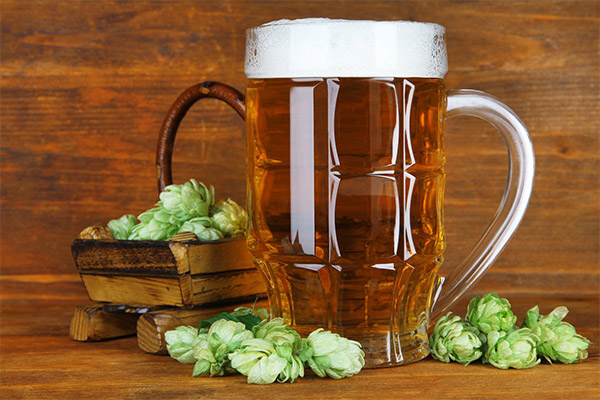
To make beer at home you do not need special appliances, it can be done by anyone, but you need time. The following ingredients will be needed:
- 1.5 kg of barley malt;
- 13 liters of water;
- 20 g hops;
- 20 grams of yeast;
- sugar at the rate of 5-8 grams per 1 liter of product.
First you need to germinate the malt. When the sprouts appear, thoroughly dry it, then grind it to small grains. Put the pot on the stove and heat it to 70-80 degrees. Make something like a bag out of gauze, put the malt in it and drop it into the water. This method is convenient in the first place because the malt is guaranteed not to burn, in addition, there is no need for filtration.
Cover the pot with a lid and cook for half an hour. It is important during this period to monitor the temperature, it should be between 60 and 75 degrees. The lower the temperature, the stronger the beer will be.
After an hour and a half you need to determine whether there is starch in the wort. This can be done by a chemical reaction with iodine. Take some of the mixture in a spoon and add a drop of iodine. If the wort has taken on a blue hue, then you need to boil it for a few more minutes. Once the starch is gone, you can proceed to the next step. You need to increase the temperature a little (to about 80 degrees) and hold it for 5 minutes.
Now you need to bring the mixture to a boil and add a few hops, not more than 7-8 grams. Then you have to let the wort boil for 30 minutes, and add as many more hops. Again, leave it to boil for 20-25 minutes, and then add the remaining hops.
The next stage is the most responsible, it is important not to breach sterility, so as not to infect the wort with harmful microorganisms. Beforehand, it is necessary to collect ice-cold water in a bathtub and quickly take the pot with the wort there. Cool it for 30 minutes. Then prepare a container for fermentation and pour the wort through gauze. After that, activate the yeast with warm water and mix it with the wort.
Cover the container with a lid and put it in a dark place for 7-10 days, while storing it is important to provide the necessary temperature regime for the yeast. It is different for each type.
Then you need to saturate the drink carbon dioxide. This requires sterilized opaque bottles and sugar. Use a silicone tube to pour the beer into the bottles and add sugar. It is important not to fill the beer to the edge of the bottle by 2-3 cm. Screw the bottles tightly and put in a dark place for 2-3 weeks. The temperature in this room should be 20-25 degrees. Once a week bottles should be shaken and at the end of time to move it to the refrigerator or cellar.
Now the beer can be drunk, but if you spend an additional aging of 30 days, it will taste better.
The benefits and harms of beer
Since ancient times, beer has been considered a useful product. People believed that it could improve the appetite and even improve health. In the Middle Ages, doctors even used it to treat some diseases. This drink has a number of positive qualities, but it is not without disadvantages.
Beer contains certain useful substances:
- Vitamin C. In 1 liter of beer is more than half of the daily norm for a person.
- Phenolic compounds. Prevent blood clots, improve metabolism, and are also a heart attack prevention.
- Carbon dioxide. Can improve blood flow. It also prevents you from drinking beer in one gulp, which prevents a quick intoxication.
- Hops. It has a calming, soporific and antimicrobial effect.
- Vitamins of B group. One liter of beer contains more than 60% of the daily norm.
Despite such a list of useful substances, beer has a number of drawbacks:
- In people who strongly enjoy this drink, the heart has to work in an increased mode. With regular use it can increase in size, this effect is also known as the "beer heart. Its performance deteriorates noticeably, which entails deterioration of other organs.
- The sedative ability of beer also has a downside. A person can get used to this relaxed state and can no longer rest without beer.
Interesting facts about beer

- Beer contains fewer calories than milk.
- Beer is one of the top three most popular drinks in the world. It is surpassed only by water and tea in popularity.
- In Thailand, there is a temple dedicated to beer. It's called the "Temple of a Million Bottles". It got this name because of the number of bottles that went to the construction. Any visitor can take part by leaving a few bottles behind.
- The builders of the Egyptian pyramids were often paid in beer.
- Beer has caused one phobia called chenosillicaphobia. It is the fear of having an empty beer glass.
«Important: All information on this site is provided for informational purposes only. purposes. You should consult a specialist before applying any recommendations. specialist. Neither the editors nor the authors shall be liable for any possible harm caused by materials."

